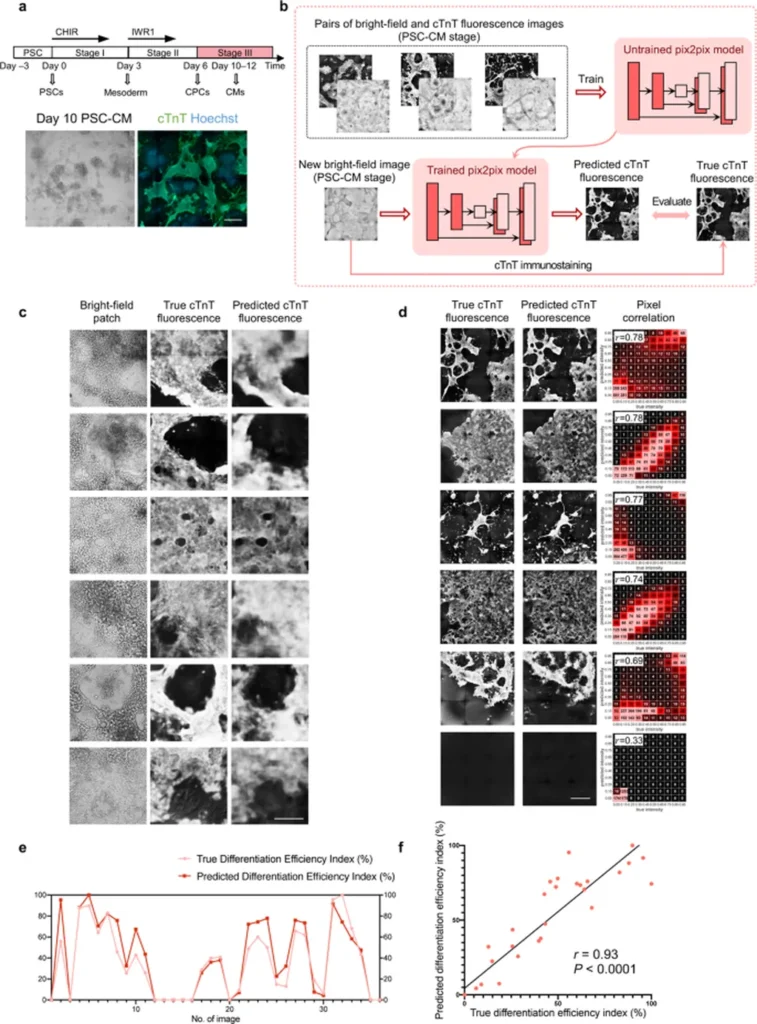In a groundbreaking development that could revolutionize sustainable protein research, scientists have harnessed the power of deep learning to predict fluorescent markers in bovine satellite cells (BSCs) using only brightfield microscopy images. This non-invasive approach, detailed in a study led by Sania Sinha from the Department of Computer Science and Engineering at Michigan State University, opens new avenues for assessing cell quality without the need for invasive techniques.
The research, published in *Frontiers in Artificial Intelligence* (which translates to *Frontiers in Artificial Intelligence* in English), employs a convolutional neural network based on the U-Net architecture to predict two key fluorescent signals: DAPI and Pax7. These markers are crucial for determining cell abundance and differentiation status, respectively. “Our method not only simplifies the process but also enhances the accuracy and consistency of cellular quality assessment,” Sinha explained.
The study utilized a dataset comprising 48 biological replicates, evaluating performance using statistical metrics such as the Pearson correlation coefficient (r), mean squared error (MSE), and structural similarity index (SSIM). For DAPI, the implementation of an image preprocessing pipeline featuring fluorescent signal denoising significantly improved the Pearson r from 0.065 to 0.212 and SSIM from 0.047 to 0.761, although MSE increased from 9.507 to 41.571. For Pax7, the Pearson r increased from 0.020 to 0.124 and MSE decreased from 44.753 to 18.793, while SSIM remained low due to inherent biological heterogeneity.
Enhanced visualization techniques, including color mapping and image overlay, further improved the interpretability of the predicted outputs. “These findings underscore the importance of optimized data preprocessing and demonstrate the potential of AI to advance non-invasive optical imaging for cellular quality assessment in tissue biology,” Sinha noted.
The implications of this research extend beyond the laboratory, potentially transforming the energy sector by providing more efficient and sustainable methods for protein production. As the world seeks innovative solutions to meet growing protein demands, this technology could play a pivotal role in developing tissue-engineered muscle constructs.
“This work contributes to the broader integration of machine learning and computer vision methods in biological and agricultural applications,” Sinha added. The study not only highlights the capabilities of deep learning in biological research but also paves the way for future advancements in non-invasive imaging techniques, offering a glimpse into a future where AI and biology converge to drive sustainable innovation.

